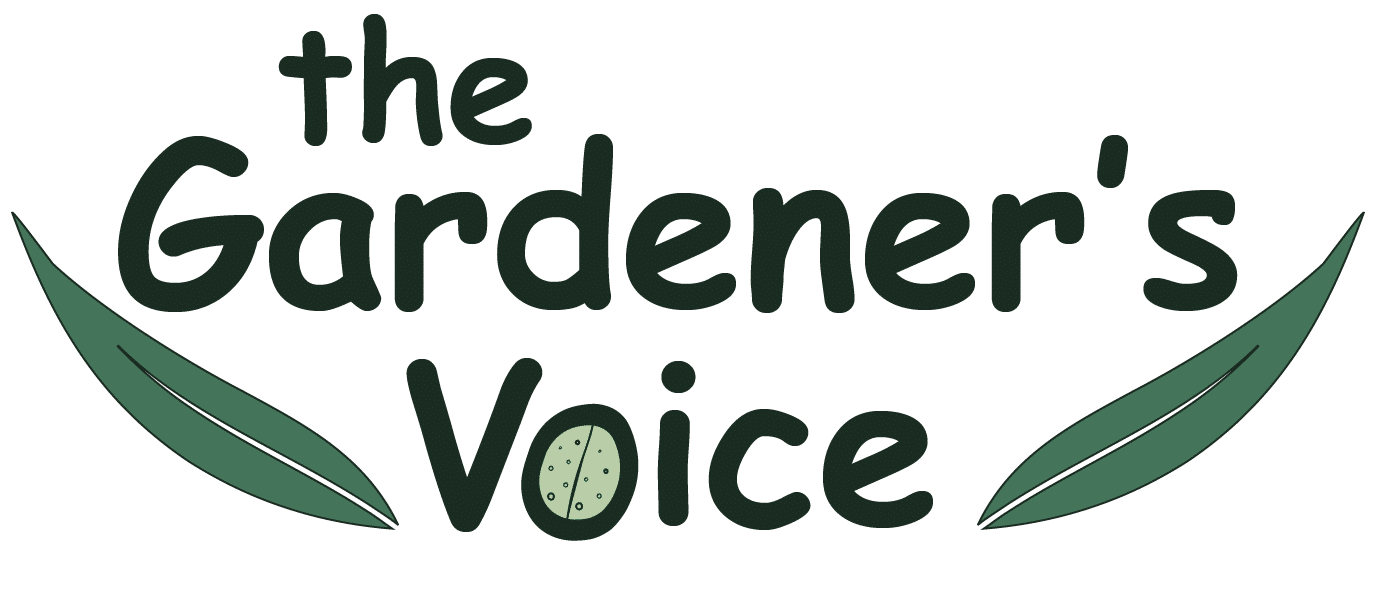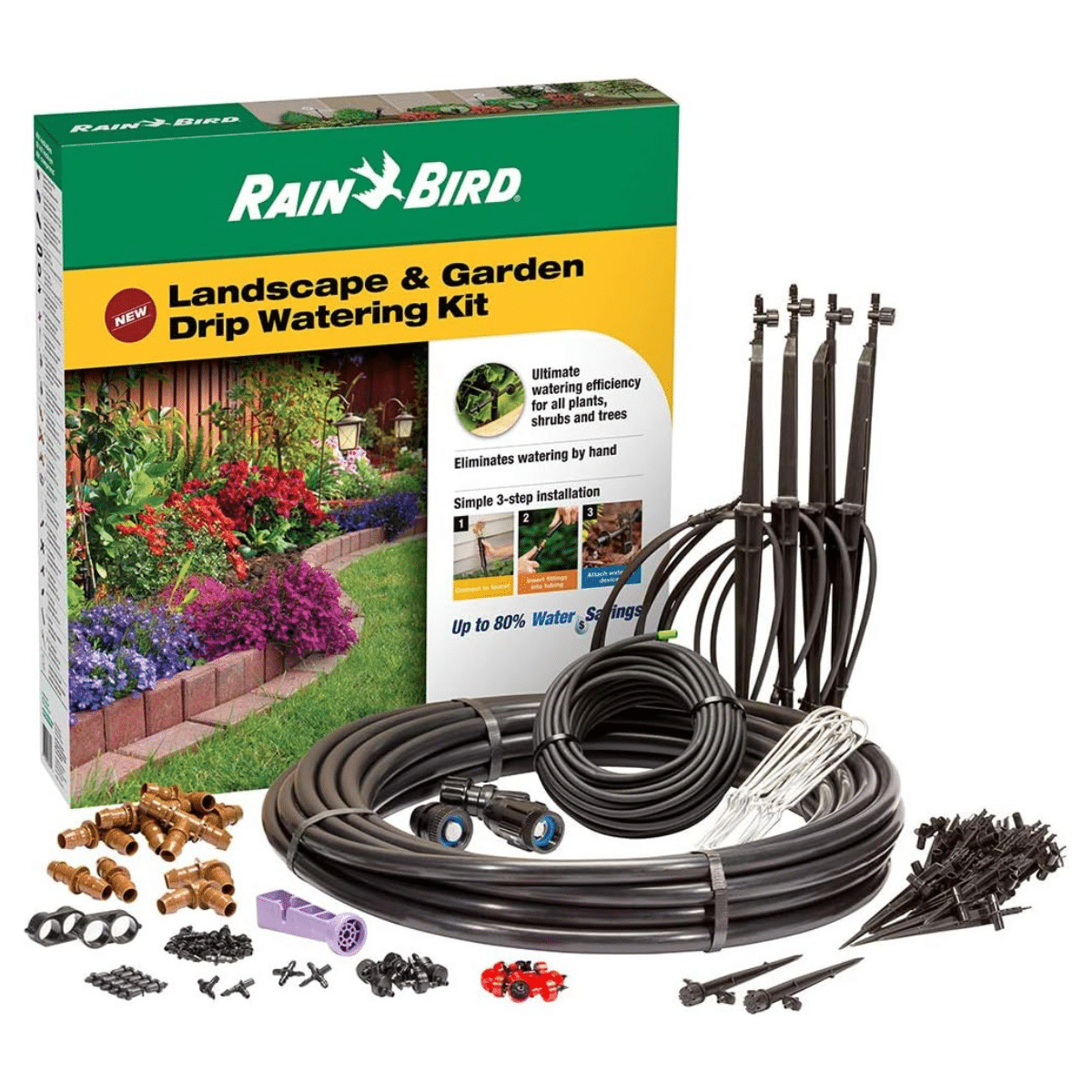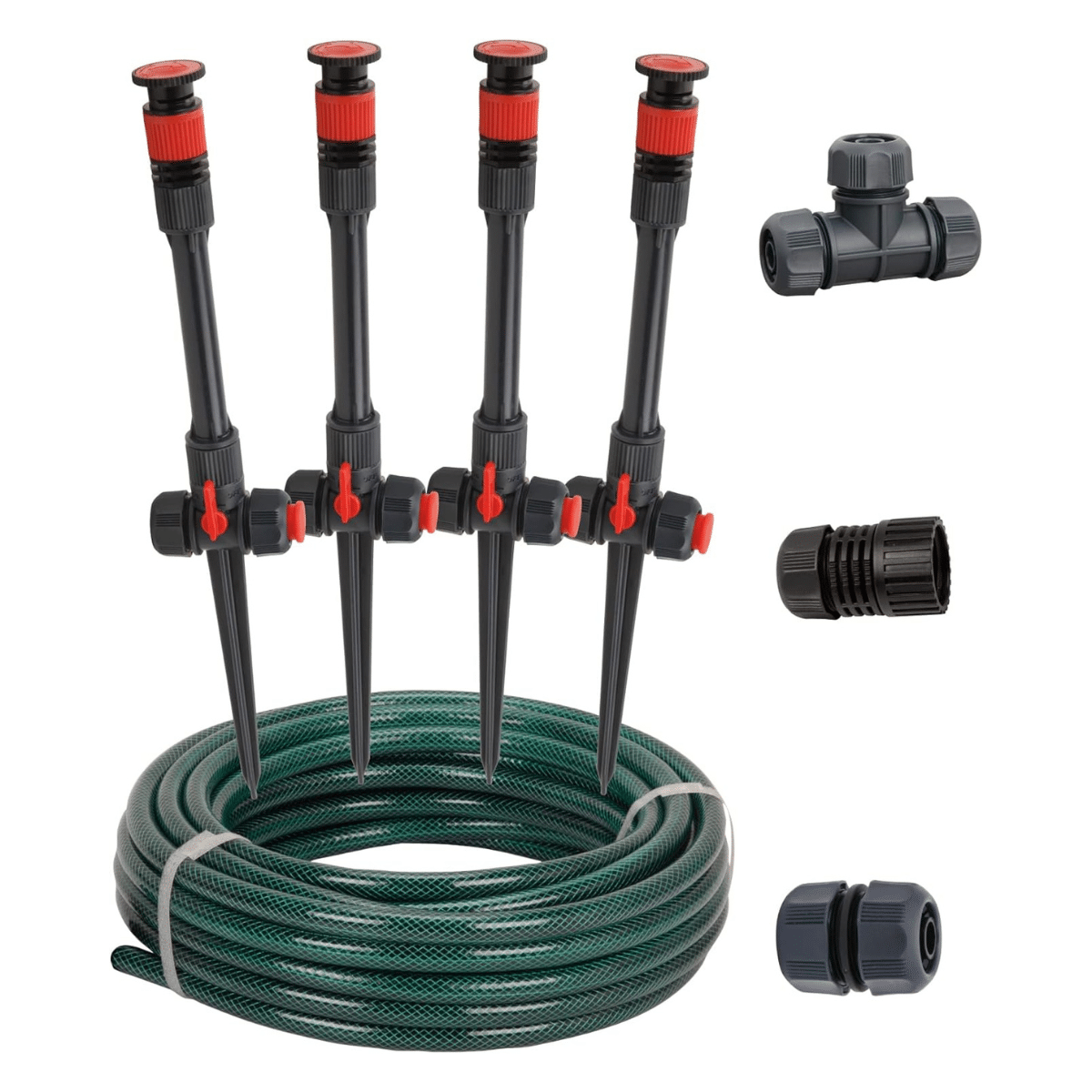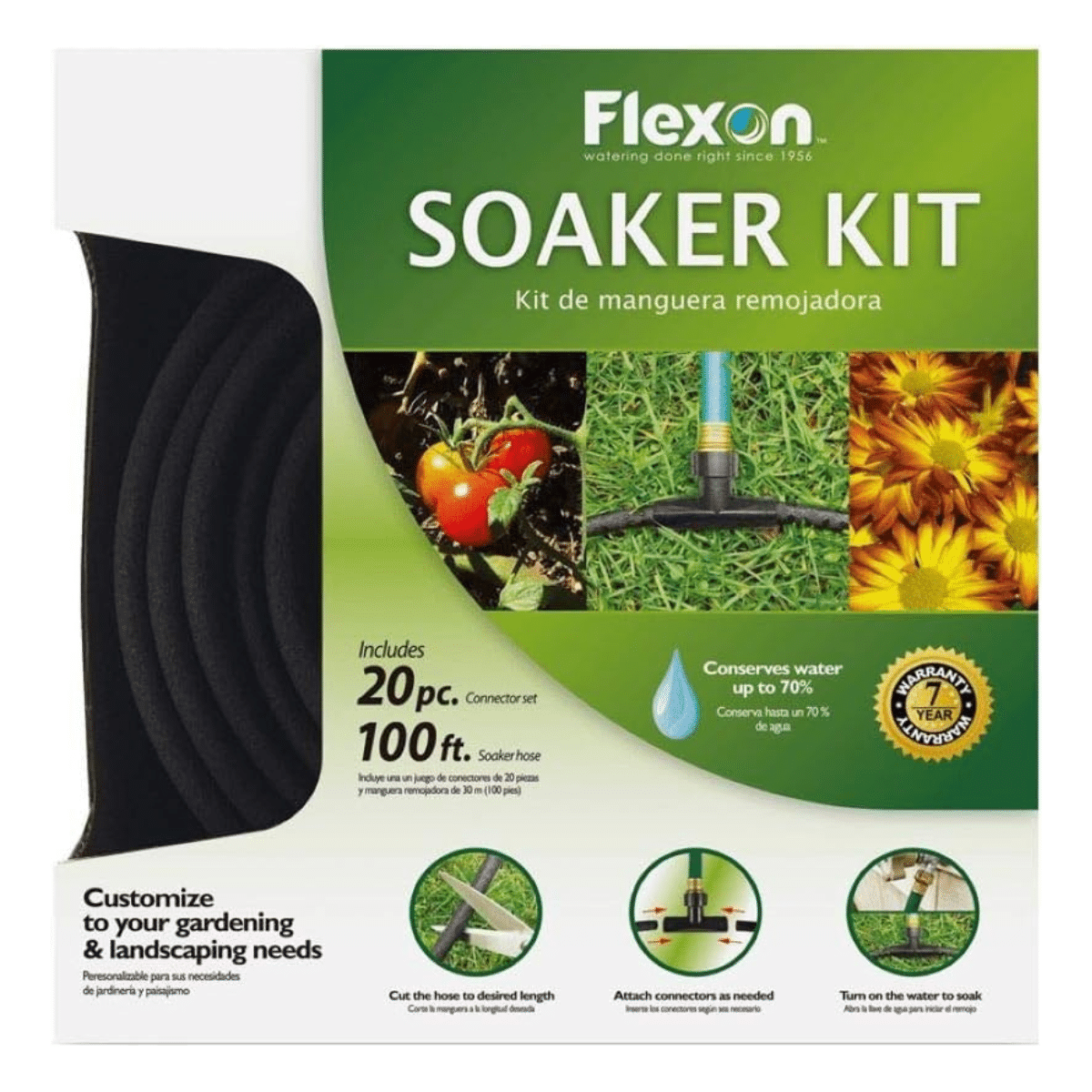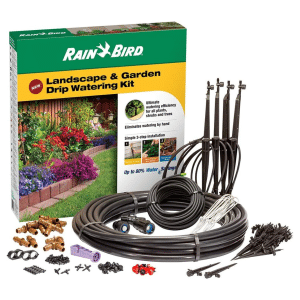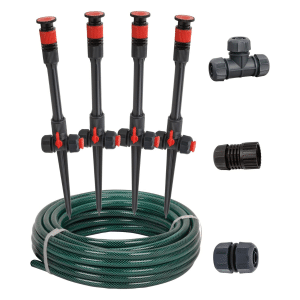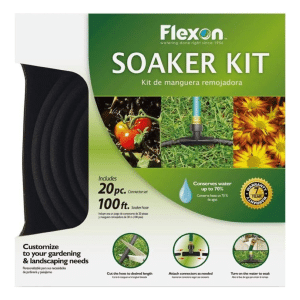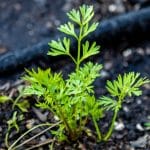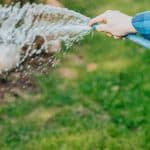Table of Contents
Best Budget
As the sun decides to peek out from behind the clouds, so does the thirst of your garden vegetable plants.
Moisture in the soil is like the heart pumping life through the garden veins. Inconsistent watering and your vegetable plants will start looking a little tired.
Now, forget those old watering cans, the traditional garden hose has seen its days. What we need is an upgrade, a leap into the future of container gardening.
Hold onto your straw hats folks, today we’re gonna explore the modern world of garden watering. A revolutionary journey awaits, traveling from the classic soaker hose system to intricate drip lines.
Types of Irrigation Systems
Irrigation isn’t a one-size-fits-all kinda deal like squeezing cheese. It’s a fine balance between giving water and washing the roots right out. The perfect harmony between deep watering and “Man, this soil is dry as Aunt Patty’s turkey!”
Different seasons, different requirements. Different vegetables, different needs. All while also trying to keep your water bill from looking like the final score in a high-scoring ballgame.
I know it sounds complicated, like trying to set up a VCR in the 21st century. But don’t you worry!
We’re about to break it down into easy-to-digest chunks, like Grandma’s mashed potatoes at Thanksgiving. Whether it’s rooftop container gardening or a sprawling vegetable plot, we’re about to get knee-deep into the finer points of irrigation systems.
Best Irrigation Systems for Vegetable Gardens
1. Drip Irrigation – Recommended Product: Rain Bird Watering Kit
Gardening isn’t a race. Vegetable gardening is more like a marathon, a slow endurance test. And that’s where drip irrigation steps in.
It provides life-support like a steaming mug of coffee on a cold morning. It’s not about drenching your whole garden; it’s about sending the moisture right where needed—to the roots.
Drip irrigation is like a sophisticated bartender, serving drinks directly to the roots. We’re talking about a controlled water delivery directly into the soil by the plants’ roots.
Imagine each plant being pampered with its drip feed, coaxing it into complete, flourishing development. But be warned: setting up these irrigation methods might be more complicated than a Rubik’s Cube.
Yet, not every plant takes kindly to drip irrigation. Tomatoes love it. Carrots? Not so much.
Selective watering can make certain areas go as dry as a prohibition town. And contrary to overhead watering, this system targets only the roots, leaving the rest of your garden high and dry.
Pros
- Good water efficiency
- Precise control
- Reduced weed growth
- Lower disease risk
- Versatility
Cons
- Clogging
- Complex installation
2. Sprinkler Irrigation – Recommended Product: Eden 98063
Now, let’s take a look at sprinkler irrigation. Here, the water dances above the crowd like confetti at a parade.
The watering systems are designed to let the water down, covering the entire soil surface and hitting every nook and corner, like gravy on a Sunday roast. Whereas drip irrigation is discrete, Sprinkler watering gives each vegetable plant an open invitation to the water party.
However, watch out for those pesky waterborne diseases. With water splashing everywhere, like at a kiddie pool party, leafy greens are not the best candidates for sprinkler irrigation.
On windy days, overhead sprinklers might act like a water cannon, missing the soil and watering your neighbor’s lawn instead.
And don’t think you’re off the hook once the watering is done. Humidity could linger, leading to fungal diseases. Your garden can quickly turn from a lush paradise into a disease battlefield. So keep an eagle eye on the moisture levels, or else the soil dries out faster than a dog shakes water off its back.
sprinkling or drip, finding the right irrigation methods for your garden is like hitting a home run in the World Series. Get it right, and you have a vegetable garden worth showing off.
Pros
- Better coverage
- Cooling effect
- Easier installation
- Automation
Cons
- Water waste
- Foliage wetting
3. Soaker Hose Irrigation – Recommended Product: Flexon Soaker Kit
If you’ve stepped foot in a garden, you’ve probably encountered a soaker hose. Picture a long, bendy serpent of water that hugs the ground. That’s a soaker hose.
It’s made from recycled rubber and filled with tiny holes that dribble water to your plants, almost like sweat from a brow on a hot summer’s day.
Spread it around your garden like a noodle gone astray in a soup bowl. The loosey-goosey design provides water directly to your plant’s roots. Perfect plant spacing isn’t necessary here.
However, soaker hoses need level land to bring their A-game. Put one on an uneven surface, setting yourself up for a problem.
The beauty of soaker hose irrigation is its water conservation. Mother Nature gives a nod of approval as much of the water gets absorbed by plant roots rather than lost to evaporation.
However, one consistent problem I’ve had with soaker hoses is the uneven watering, especially when raising them between beds.
Pros
- Even moisture distribution
- Weed suppression
- Reduced foliar disease
- Easy installation
- Water conservation
Cons
- Clogging
- Uneven watering
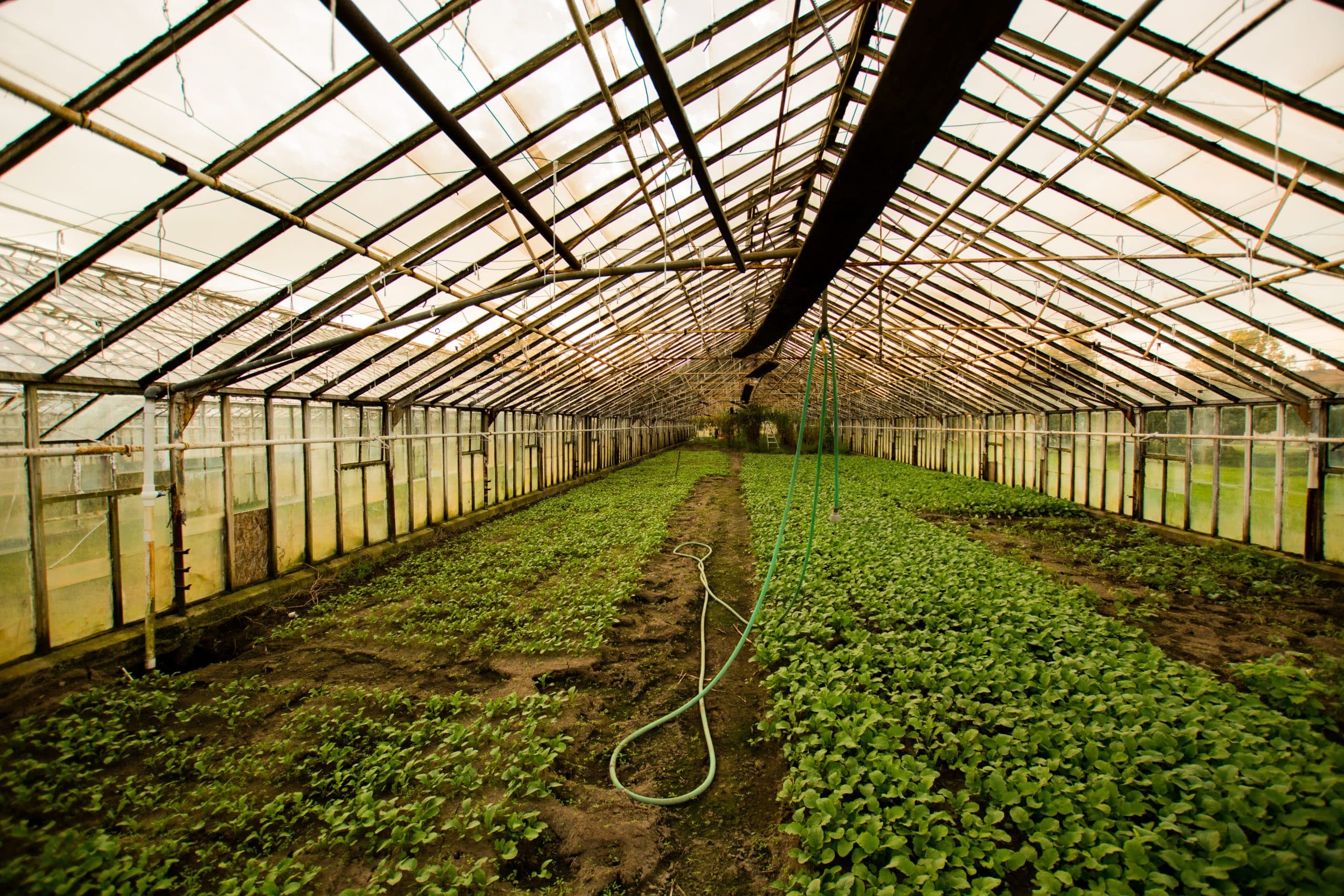
Specific Irrigation Considerations for Various Seasons
Your call to watering plants must reflect the season. With its chirping birds, spring may call for less watering as the skies shower your garden with abundant love. While during blazing summers, a daily splash wouldn’t offend your hardworking veggies.
As the leaves take on a reddish hue, your soil will crave less moisture levels. And then winter brings its challenges. The icy queen freezes what she touches and might warrant shielding your garden babies with plastic sheeting.
But remember, even in winters when your mouth feels like sandpaper, your garden might occasionally feel parched, too. And that, buddy, is when you step in!
Gardening Through Cold Fall and Winter Months
Talking about fall and winter might sound like a cold-hearted villain draining the moisture away faster than a sponge. But fear not because, with the right precautions, your garden can sing arias and stay comfortably green through colder months. Trust me on this!
It’s about covering your bases or, in this case, beds. Gather some polypropylene row covers to keep your greens snuggly and warm as toast. This lightweight cover allows in water but keeps cold out. Think of it as sweaters for your fresh produce.
Enter plastic sheeting. It’s not as friendly, but it prevents your precious veggies from turning into vegetable popsicles. If you sense the onset of a hard frost, exchange row covers for plastic sheeting.
With it, you densely fence out the chill, creating micro-tunnels. It’s like building little igloos for the plants, with you as the ever-watchful architect.
Preparations for Spring and Summer Veggie Growth
Spring and summer are the time of year that gets gardeners itching to dig into the soil and see their lush vegetable gardens come to life. One key way to make this vision a reality is to have an efficient watering system nailed down.
When the temps start rising, these irrigation systems will be the savior of your plants. They keep your green companions hydrated without wasting a drop.
Drip watering systems are a favorite. It’s like those all-you-can-eat buffet restaurants but for plants. It delivers water straight to the root zone, meaning your veggies get a continuous supply of moisture exactly where they need it.
Things get better as it’s adaptable to any garden design or plant spacing you have.
Imagine watering individual plants precisely, promoting healthy root growth, and not even breaking a sweat. Now, that’s what I call a win-win!
But here’s the crown jewel. These systems are so easy to install that even a child could do it. You must connect these fantastic drip devices carefully to your garden, maintaining a specific water flow rate.
Then sit back, relax, and watch your vegetable gardens grow from the seedling stage into a bountiful Eden. And you know what they say: ‘Gardens are a gift that keeps giving.’
How to Make the Most of Raised Bed Garden Irrigation?
Raised bed gardens are like the skyscrapers of the garden world, aren’t they? Soaring above ground level, they give your greens a plush view. But guess what? They don’t just look good.
Garden planning with raised bed gardening in mind helps improve soil quality and enhances growth, and much like our earlier friends, the drip watering systems help conserve water.
But it also has its challenges. Keeping these high-rises hydrated could be a tricky business. We’ve got you, though.
Using a formal irrigation system is like hiring an A-one concierge for your vegetable garden hotel. It’s foolproof and ensures water reaches every floor without fail.
Yeah, installing these may pinch your wallet a bit, but trust me, it’s worth every penny. Once installed, these systems operate on auto-pilot, caring for your garden like a dutiful butler.
Now, isn’t that worth a few extra bucks?
Pros and Cons of Hand Watering
I hear you, not everyone is about tech love. Some of us enjoy getting our hands dirty, feeling the soil and compost between our fingers, and watering our gardens. Yes, it’s a job done with care and love.
Hand watering gives you an up close and personal relationship with your plants. You get to know their moods, their highs and lows, and you can act on spotting any disease problems early, long before they have a chance of throwing a wrench in your gardening dreams.
You’re in the game, right in the field, amending the soil, catching those pesky squiggles before they wriggle their way into your lovely green family. It’s work, but there’s a satisfaction to it that machinery can’t capture.
But then, every coin has two sides. Hand watering may seem peaceful, but it can feel like carrying a rain barrel on your back when the garden gets bigger. After all, we’re not Marvel superheroes, are we?
Also, maintaining a consistently moist garden can be difficult with hand watering. It takes some effort and a bit of a knack. Not to mention that you could end up not watering enough or turning your garden into a suburban lake.
Pros and Cons of Drip Lines
If you’ve been toying with installing a drip line, you’re moving in a promising direction. These agricultural boxers punch above their weight. They always deliver water precisely where you want it, making them a shoo-in for in-ground gardens.
There are some cons we gotta cover, too.
First, the good stuff. Now, a drip line is like a reliable job – it keeps the water flowing directly to the saturated roots of your veggie pals. Makes the plant watering business easier.
These folks aren’t much into sprinkling water around; they’ve mastered the art of giving drinks to the plants directly, helping to curtail water wastage. Plus, it allows you to water right at the root, skipping past all those leafy sun loungers that don’t need a drink in the first place.
But every good thing’s got a flip side, right? If we’re being honest here, drip lines have the lifespan of a Hollywood marriage.
The thin wall of the drip tape makes it susceptible to damage, and if you’re not careful when you roll it up, it’ll get cranky on you. Plus, weeds might decide to crash your garden party because the system largely leaves the spaces between the plants unwatered. This makes it a partial invitation to those unasked gatecrashers!
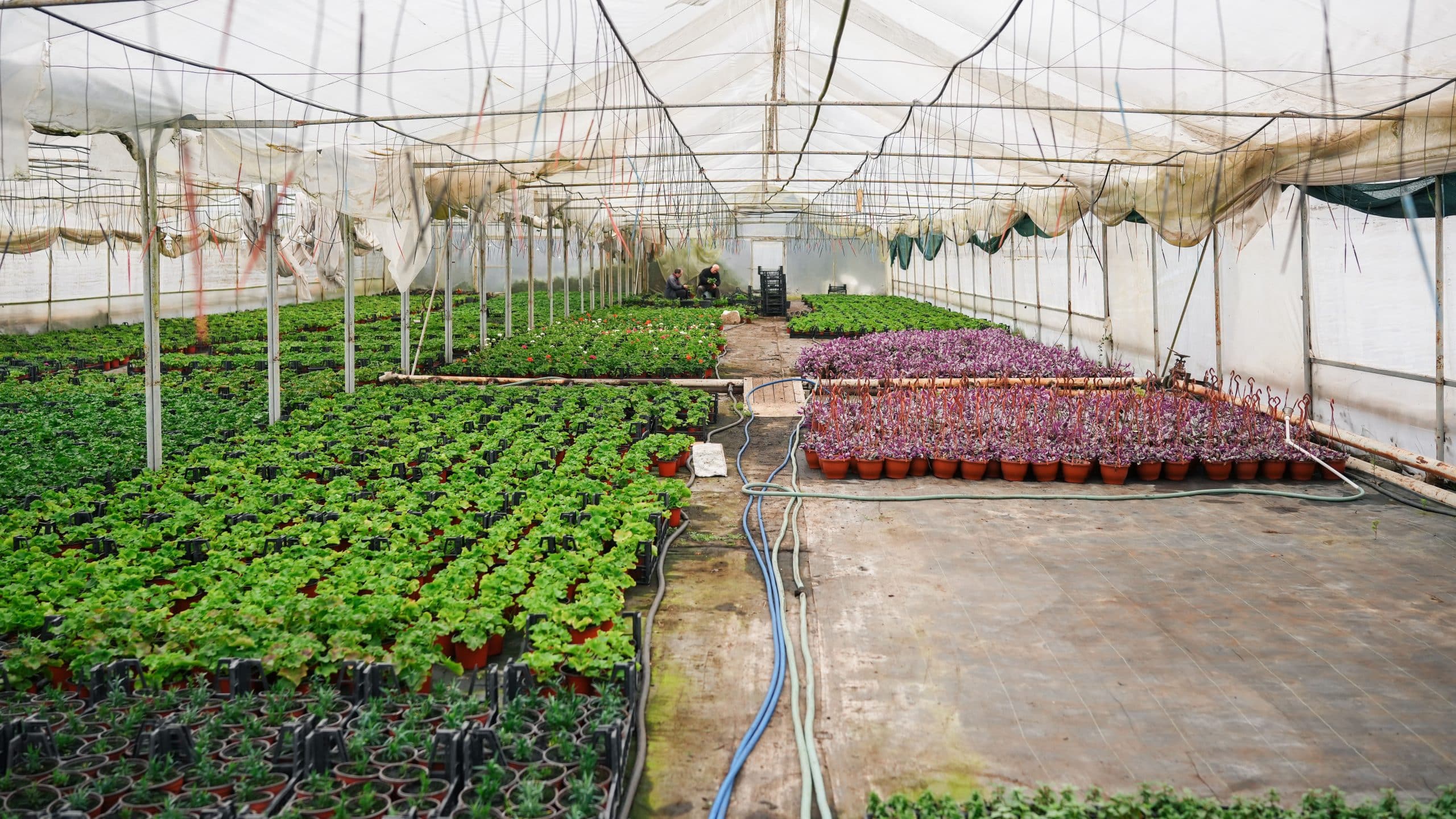
Understanding the Role of Drip Tape in Irrigation
You know the thing about vegetable gardens, right? They’re like kids just waiting to grow and shine, but they prefer a slow, subtle spoon-feeding of water. Enter our magic wand, the Drip Tape.
Imagine it as a long, plastic strip that lies flat until it engulfs water. It then transforms into an irrigation superhero, delivering water straight to the roots of your veggies without any wastage or splashes. Quite friendly for those who don’t want to wet their garden shoes, eh?
But don’t let the superhero image fool you into thinking it’s an immortal piece of gardening equipment.
Drip Tape has a lifespan and doesn’t bend well, which means it’s not a one-time fairy godmother purchase, but it’s like getting season baseball tickets – great while it lasts, not meant for forever.
Despite that, Drip Tape does a remarkable job of watering those long rows in your garden without breaking your back or water bill.
Advantages vs Disadvantages of Drip Tape in Irrigation
Now, Drip Tape ain’t a magic wand without its dark spells. On the right side of the coin, drip tape takes your water directly into the soil where it’s needed most.
- No hassle of garden hoses, sprinkler systems setting up, and costly water bills.
- Your plants are well-watered without causing any puddles in your beautiful garden space.
- Saving water and the extra labor of watering are some of its superpowers.
- Drip Tape comes to the rescue in the scorching summer heat, providing a life-giving drink right to the roots and reducing heat stress on your precious greens.
- Plus, it can create a fortress against those pesky weeds when paired with mulch.
But hold your horses, ’cause as sturdy and handy as it seems, drip tape has its set of downfalls.
- The first and, quite understandably, the durability.
- Lightweight, thin plastic may be easy to handle and install, but it isn’t meant for heavy-duty use.
- A wayward shovel or a hungry rodent can puncture it, leaving your plants thirsty and your work wasted. So, if you’re committed to your veggies like you are to your favorite TV series, be prepared for the replacement runs every few years.
- Besides, for the initial setup of Drip Tape, you might need to shell out some dough for the irrigation supplies. They say it’s a small investment towards a big harvest, and I couldn’t agree more!
Altogether, Drip Tape delivers water directly into the soil where it’s needed the most, saving you time, water, money, and, most importantly, the exertion of dragging hoses around.
But beware, there are hefty set-up costs and the need for punctual maintenance.
Make your choice smartly because if you’re looking for a casual fling with gardening, then maybe Drip Tape isn’t your cup of tea.
But if gardening’s your ‘thing,’ then, my dear friend, Drip Tape is the one true friend you can rely on.
Conclusion
Finding the best irrigation system for your veggie patch isn’t a one-shoe-fits-all situation. It’s more like picking out the nicest hat from a hat store. Your choice depends on many factors – your location, budget, experience, and mostly the type of crops you’re growing.
The watering of plants is a grand mission, a quest for the holy grail of garden health and productivity. Consistent hydration is the linchpin here, folks. Since we can’t always depend on Mother Nature to quench our plant’s thirst through rain, having a decent irrigation system is the best. The hidden, green-thumbed hand gives your veggies the life-affirming H2O they crave.
Drip, overhead, or soaker irrigation systems are your current top three choices.
Drip irrigation is super efficient, like an economical sports car that doesn’t hog all the fuel. Overhead shoots water from above, a little rain dance for your plants. And the soaker hose imitates that long, satisfying drink after an exhausting day.
Each shines in its way. All you can do is consider the specifics of your specific garden, roll up your sleeves, and take a step towards a vibrant, hydrating future.
Lastly, we spoke about the drip tape. It’s got its benefits and its drawbacks. But despite its challenges, like a detective with a complicated backstory, it fights for the health of your garden.
Like gardening, picking the best irrigation method needs intuition, deliberation, and more than a smidgen of trial and error.

I’m John, a “seasoned citizen” and an avid gardener. I live in Minnesota, where our weather and growing conditions can be harsh and challenging. Over the years, I have learned a thing or two about being successful in growing things. I have curated these tips, which I think are helpful for the beginning gardener and the seasoned experts. If you have feedback, let me know in the contact form.
